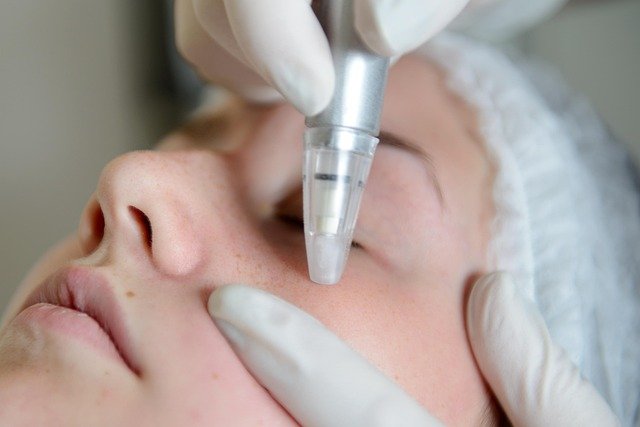Restore Radiance: The Complete Skin Rejuvenation Guide
Discover practical, professional approaches to restoring a fresh, youthful complexion. This guide explains how laser therapies, IPL, chemical peels and other modern rejuvenation techniques improve texture, reduce lines, treat sun damage and boost collagen. Learn what to expect, which concerns can be treated, typical costs, and how to choose the right provider for lasting, healthy skin.

Achieving fresher, more youthful-looking skin is increasingly possible thanks to advances in cosmetic treatments. Skin rejuvenation encompasses a range of procedures designed to address texture, pigmentation, fine lines, and loss of firmness. Many people turn to laser and light-based therapies because they can precisely target specific concerns while limiting damage to healthy tissue. Below is a practical overview of the benefits, conditions treated, treatment types, recovery expectations, and cost considerations to help you make an informed choice.
Benefits of laser skin rejuvenation
Laser-based approaches offer several advantages over basic topical care or more invasive surgery. Key benefits include:
- Improved skin texture and more even tone: Lasers can smooth rough patches, refine large pores, and reduce blotchy pigmentation.
- Diminished fine lines and wrinkles: By stimulating the skin’s healing response, treatment encourages collagen remodeling that softens creases.
- Reduction of age spots and sun-related discoloration: Targeted light energy breaks up excess pigment for a clearer complexion.
- Increased firmness: Treatments that reach deeper layers promote collagen and elastin production, which can tighten mildly lax skin.
- Shorter recovery compared with invasive surgery: Many non-ablative and fractional options offer significant results with limited downtime.
Most treatments can be tailored to individual skin types and goals, making them suitable for a wide range of patients when performed by experienced clinicians.
Common skin concerns treated with rejuvenation methods
A variety of issues respond well to rejuvenation procedures, particularly when lasers are involved. These include:
- Fine lines and moderate wrinkles
- Sun damage and age spots
- Uneven skin tone and rough texture
- Acne scars and other types of scarring
- Enlarged pores
- Persistent redness and rosacea-related flushing
- Mild to moderate skin laxity
Effectiveness depends on the condition’s severity, the specific technology used, and individual skin characteristics. A consultation helps determine realistic outcomes.
How different lasers and light therapies work
There are several categories of devices used for rejuvenation, each working in a different way:
-
Ablative lasers: These remove the outermost layers of skin, triggering a strong healing response and new tissue growth. They are effective for deep wrinkles and heavy sun damage but typically require more downtime.
-
Non-ablative lasers: These bypass the surface and heat the deeper layers to encourage collagen formation without removing skin. Recovery is quicker, though multiple sessions may be needed for noticeable change.
-
Fractional lasers: By treating tiny columns of skin and leaving surrounding tissue intact, fractional devices balance efficacy and healing time. They offer meaningful improvement with faster recovery than fully ablative methods.
-
IPL (Intense Pulsed Light): Although not a true laser, IPL emits broad-spectrum light to target pigmentation and vascular issues, improving overall tone and brightness.
Choosing among these options involves weighing desired results, tolerance for downtime, and skin type. Providers often combine modalities for a customized plan.
What to expect during treatment and the recovery timeline
Procedures vary in length but most are relatively quick—many sessions last from 30 minutes to an hour. During treatment you may feel heat, tingling or a light snapping sensation; topical anesthetic is sometimes used for greater comfort.
Aftercare and recovery can include:
- Temporary redness and mild swelling for a few days to a week
- Possible peeling or flaking as the skin renews
- Gradual improvements in texture and tone over several weeks as collagen rebuilds
- Multiple treatments may be recommended to achieve the best results
Strict sun protection and following your practitioner’s post-care guidance (gentle cleansers, moisturizers, and avoiding irritants) are essential to protect results and minimize complications.
Pricing and typical providers
Costs vary widely based on the technology, the treated area, provider expertise, and geographic location. Below is a general comparison to give a sense of expected ranges.
| Treatment Type | Typical Provider | Typical Cost per Session |
|---|---|---|
| Ablative Laser Resurfacing | Dermatology or Plastic Surgery Centers | $1,200 - $3,500 |
| Non-Ablative Laser Therapy | Medical Spas or Dermatology Clinics | $600 - $1,600 |
| Fractional Laser Treatment | Aesthetic or Plastic Surgery Centers | $900 - $2,500 |
| IPL (Intense Pulsed Light) | Medical Aesthetic Clinics | $300 - $900 |
| Chemical Peels | Skincare Spas and Dermatology Offices | $150 - $700 |
Prices, rates, or cost estimates mentioned above are based on current market information and can change over time. Independent research is advised before making financial decisions.
Many patients require a series of sessions to reach their goals, which increases total cost. Clinics often offer package pricing or financing options to spread expenses.
Choosing the right treatment and provider
Consult a licensed dermatologist or certified aesthetic specialist to discuss your skin history, expectations, and any medical considerations. A skilled provider will assess your skin type, recommend appropriate technologies, explain risks and realistic outcomes, and create a customized plan.
With careful selection, proper aftercare, and realistic expectations, skin rejuvenation can significantly enhance your complexion’s health and appearance. Whether you opt for lasers, IPL, or chemical peels, informed decisions and professional guidance yield the safest and most satisfying results.
This article is for informational purposes only and should not be considered medical advice. Please consult a qualified healthcare professional for personalized guidance and treatment.






